
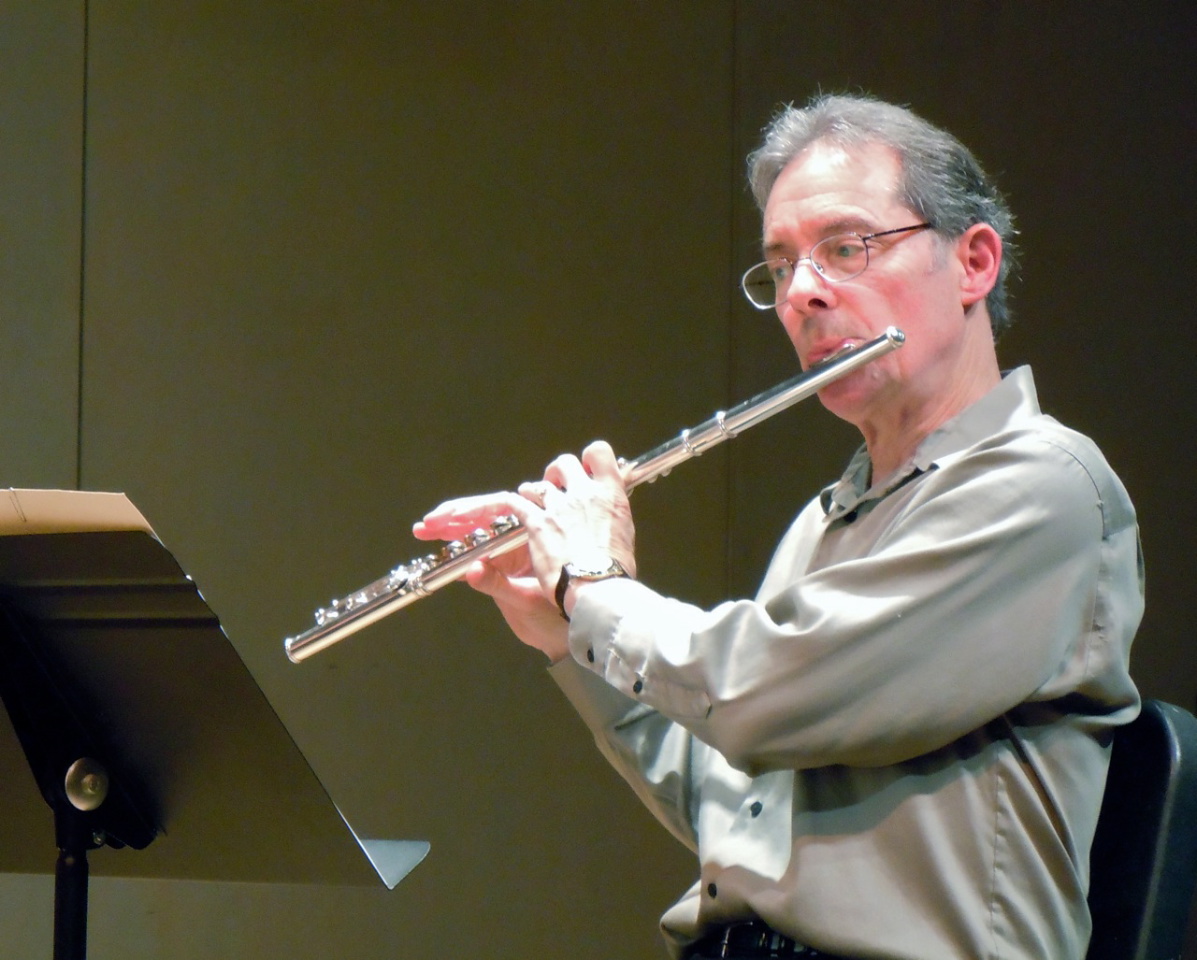
Daniel Kessner
Free Counterpoint, for 4 pianos (acoustic, digital, and/or electronic)
Duration: 10'
Instrumentation details:
piano
piano
piano
piano
Free Counterpoint, for 4 pianos (acoustic, digital, and/or electronic)
Translation, reprints and more
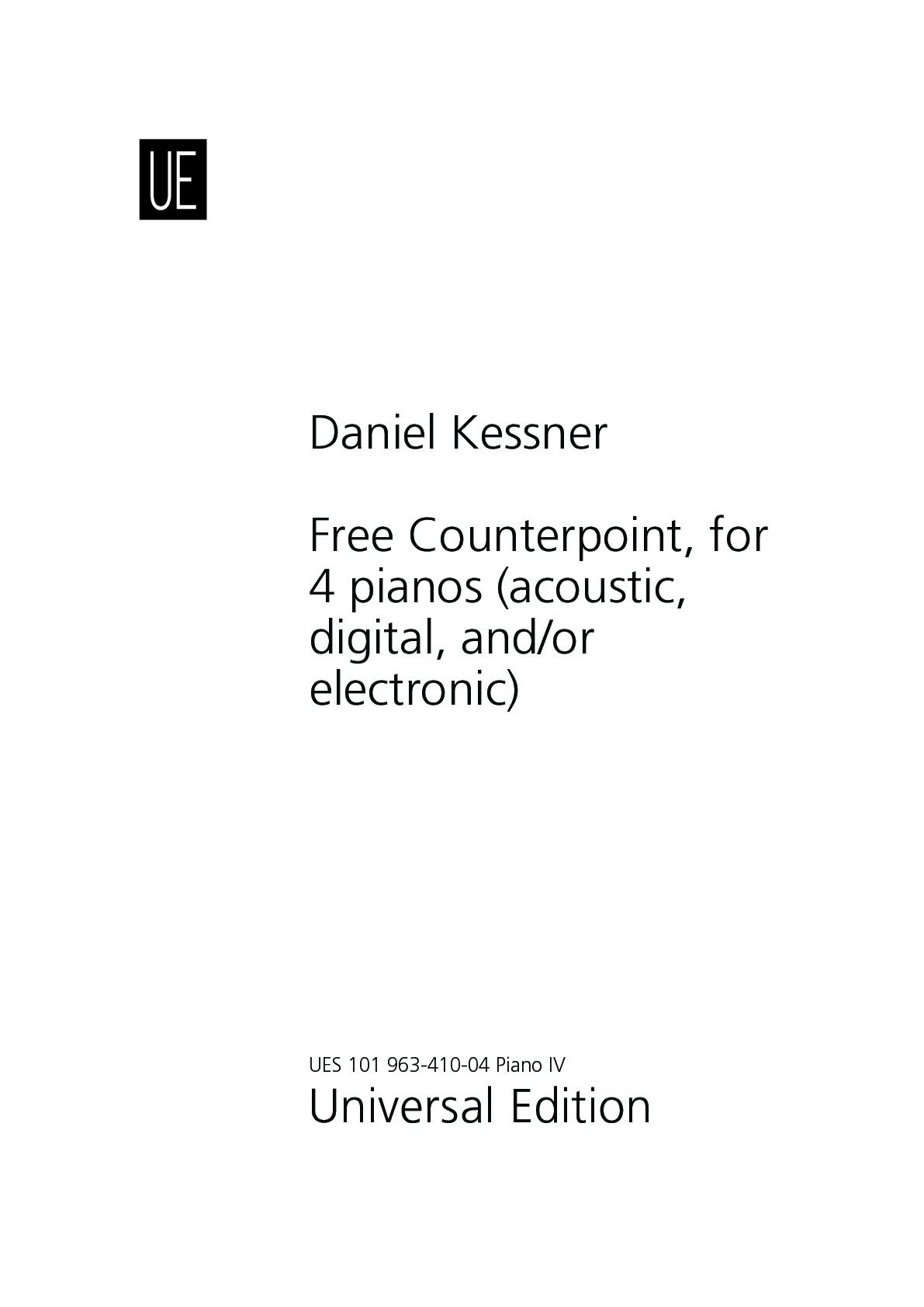
Daniel Kessner
Klavier (Free Counterpoint, for 4 pianos (acoustic, digital, and/or electronic))Type: Stimme
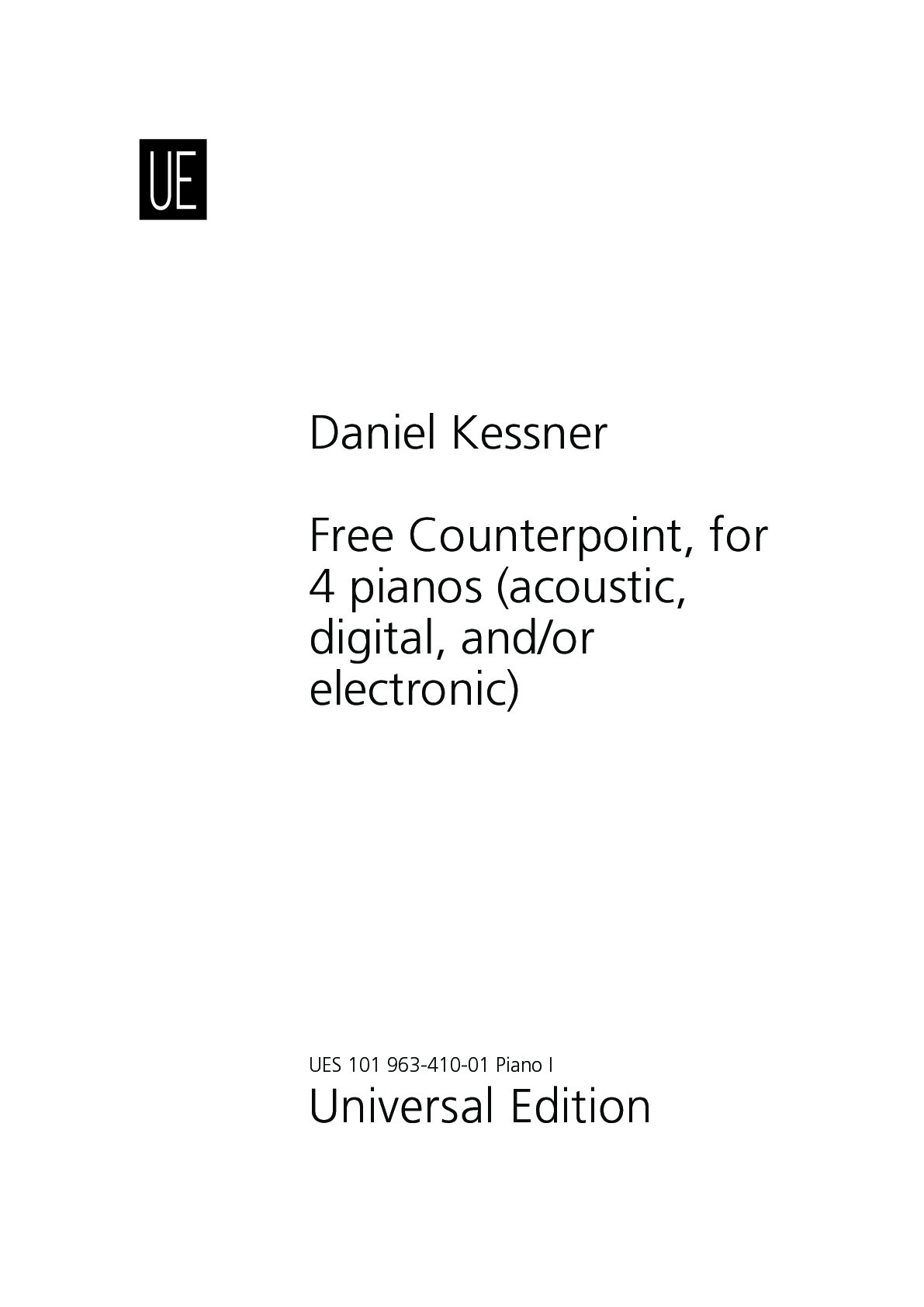
Daniel Kessner
Klavier (Free Counterpoint, for 4 pianos (acoustic, digital, and/or electronic))Type: Stimme
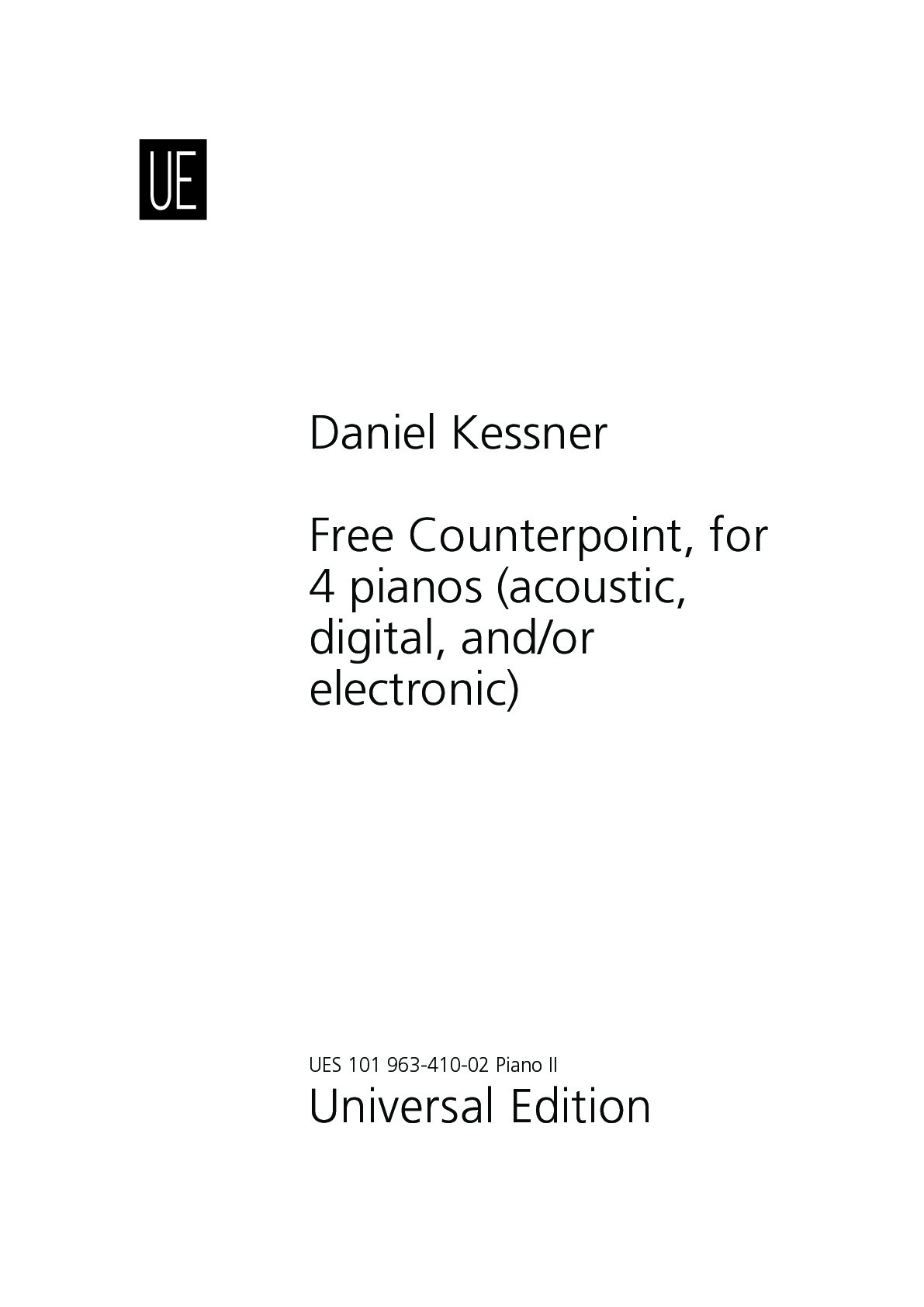
Daniel Kessner
Klavier (Free Counterpoint, for 4 pianos (acoustic, digital, and/or electronic))Type: Stimme
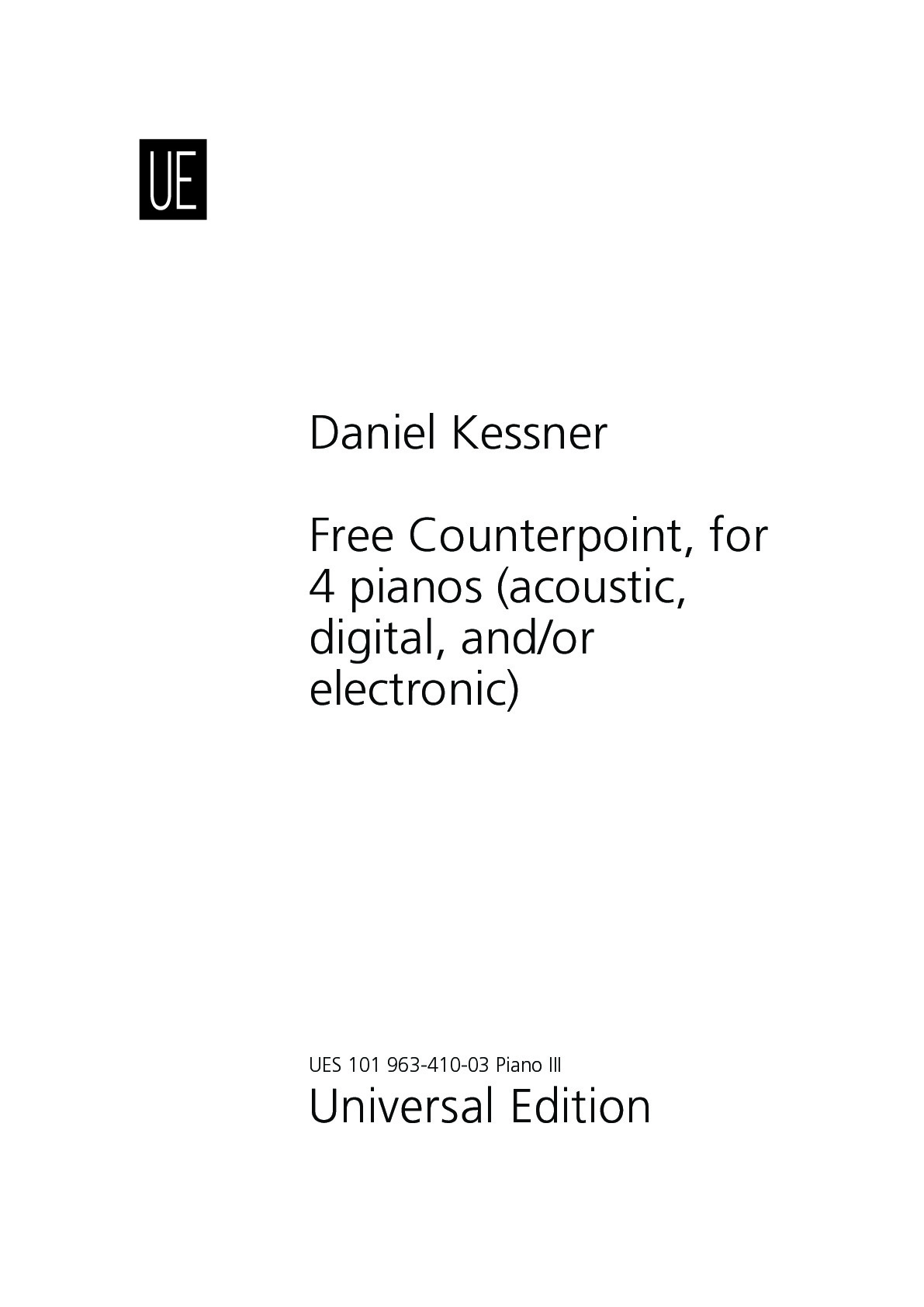
Daniel Kessner
Klavier (Free Counterpoint, for 4 pianos (acoustic, digital, and/or electronic))Type: Stimme
Sample pages
Work introduction
As the long-time director of student contemporary music ensembles, the composer wrote Free Counterpoint for those numerous occasions when he was faced with more keyboard players than he could find repertoire for. The title refers back to the traditional approach to counterpoint instruction, where the various species are taught first, note-against-note, two notes against one, and so on, culminating with free counterpoint, in which all rhythmic values are mixed. The intent here was to take that idea to another level. Free Counterpoint is a work in which pianists of modest technical level can discover a different kind of interactive chamber music experience.
Any combination of acoustic and/or electronic/digital instruments may be used, as long as they all have the required range. If two acoustic and two electronic instruments are used, it is preferred that parts I and IV be played on the acoustic pianos. If the stage permits, it is preferred that the pianos be as far apart as possible across the stage, and in a line, slightly curved away from the audience.
The essential sound of Free Counterpoint is that of the four performers playing more or less together, but never exactly synchronized. Sometimes they are playing contrasting material, sometimes similar, sometimes identical, but always freely combined rather than in a clearly defined metrical relationship.
What is necessary to perform this work?
All four performers read from full score. What are listed as "separate parts" are simply full scores.
